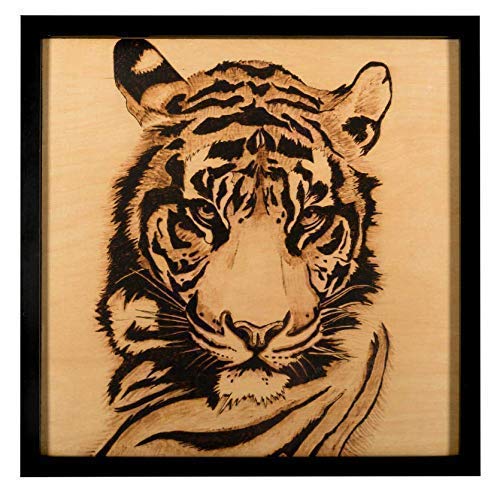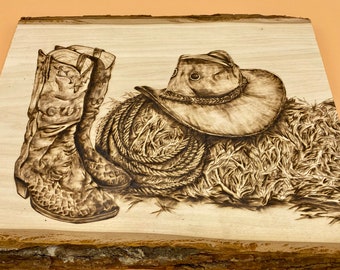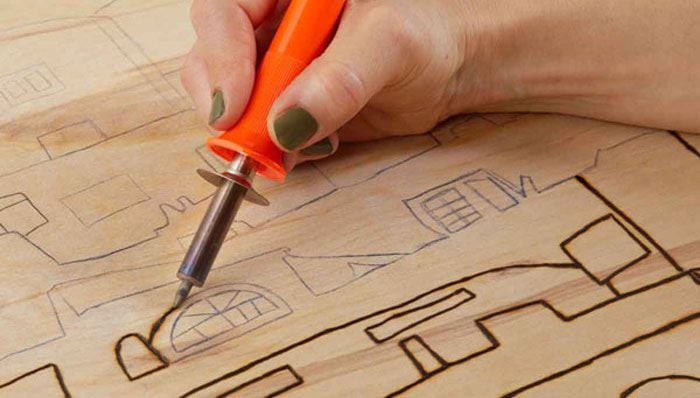
You can now choose the color of your stain after you've completed your wood burning project. This will make sure that the stain does not ruin your design. To avoid any problems, stain can be applied in any shade or tone. However, avoid areas that are too bright or too dark. Additionally, it is important to brush or char any stain first.
Stained wood
Staining wood should be considered before you start to burn it. The stain increases the wood's flammability, making it more volatile than the original wood. You can choose a stain which is more flammable but remember that wood that has been stained will produce more toxic emissions. It will also likely burn at a higher level than you prefer, which can be harmful to the environment.
First, determine if you wish to burn the stained timber. Wood stained with stain is not allowed to be burned in many states. The reason is that wood stained by stain can be emitted into the air as toxic toxins. Not only is this bad for the environment, but it's also dangerous for young children and people with lung problems. It is important to learn about safety procedures when you burn stained timber.
Charring
A charring wood-burning stain can be used before and after to give your project a unique and beautiful look. This technique varies from project to project, but most people choose to char wood to create a distressed look. You have two options after you've charred wood: oil it or leave it unfinished. This method provides enhanced weather-protection as well as soft sheen. It is also durable because it hardens over time. It is important to remember that charred wood should not be left unoiled for more than ten to fifteen year to preserve its color and luster.

The charring process leaves a two or three-millimeter-thick layer of char on the wood's surface. This layer of charcoal is resistant to UV rays and water vapor, which prevents wood from developing decay. Untreated pine can be made suitable for exterior cladding by charring. Charring wood is a great choice for sustainable building structures as it reduces or eliminates the use of chemical products.
Brushing
Brushing wood before and afterwards can make it look even better. The carbonized residue can be removed with a simple wire brush. Brushing before and after burning is important to create a crisper edge and contrast between the summer and spring veins. The spring veins have less carbon and will be lighter. Brushing takes more carbon. In addition, brushing before and after burning can help remove soot and excess stain from the wood surface.
Brushing wood with wood burning stain before burning is important to ensure that the veins are not overlapping. Spring veins burn slower than summer, but the combustion process is different for each part of the wood. This can be achieved by using your naked eye to make the right contrast. This technique takes some practice to become proficient. It's worth it!
Sealing
Remove any pyrographic process residues from the wood surface before applying a wood burning stain. Wood sealants can be flammable so you need to burn it off before applying the stain. After staining, you must allow the wood to completely dry before sealing. To prevent unevenness and pooling, keep the nozzle five centimeters below the surface. You should remove any droplets visible.
For its archival properties, varnishes are also available. Varnish is more durable than oil but can also be used by hand to remove color. You can add color to your wood burning projects by using a liquid varnish or spray varnish. The varnish isn't compatible with pencil wax so it won’t smudge. A wood burning stain can be more time-consuming but will preserve the final result.
Removal

Although wood burning stains can be hard to remove, they don’t necessarily have to remain. If the cigarette burn is not severe or visible, you can apply superfine steel to it and then wipe it with a rag. Chlor laundry bleach can also be used to remove the burnt-out stain if it's more severe. Use a cotton towel to apply the solution. Then, allow the bleach to do its job.
A wire brush can be used to remove the char from the wood if it is difficult to remove. Make sure the wire brush doesn't scratch the wood. You can also use a wire brush to gouge out heavier char. You can then wipe off any ash remaining on the wood using a microfiber towel or paper towel.
FAQ
What kinds of woods are good for making furniture?
Woods can be classified according to how hard they are. Softwoods include pine, fir, cedar, and cypress. Because they are resistant to rot, softwoods are often used as outdoor furniture. The hardwoods are oak, maple and mahogany. They can't withstand the elements outside so they're best kept indoors.
What tools are used by carpenters?
The most common tool used by carpenters is a hammer. The hammer is used to pound nails into wood. This helps to keep pieces together when they are working on a project. Other tools include clamps.
Where can I purchase hardwood lumber?
Home Depot can sell hardwood lumber. You can find all types of wood products at Home Depot, such as flooring, cabinets and furniture.
A wide range of engineered hardwoods are also available, such as Ipe and Brazilian Cherry (Pau d'Arco), Mahogany and Swietenia Macrophylla.
These woods are available online by searching Google for "hardwood lumber".
Statistics
- In 2014, there were just over 237,000 jobs for all woodworkers, with other wood product manufacturing employing 23 percent; wood kitchen cabinets and countertop manufacturing employing 21 percent. (theartcareerproject.com)
- Overall employment of woodworkers is projected to grow 8 percent from 2020 to 2030, about as fast as the average for all occupations. (bls.gov)
- Most woodworkers agree that lumber moisture needs to be under 10% for building furniture. (woodandshop.com)
- Woodworkers on the lower end of that spectrum, the bottom 10% to be exact, make roughly $24,000 a year, while the top 10% makes $108,000. (zippia.com)
External Links
How To
How to make wood joints
This tutorial will demonstrate how to join two pieces together of wood. We will use the pocket hole joint, which is drilling holes in the wood to join them. This works well if the wood is straight and smooth. You might consider dowel joinery if your wood isn’t straight or flat. These are the steps
-
Drill Pocket Hole Joints. First, measure the area where you wish to place the pocket joint. Use a jigsaw or handheld drilling machine to drill 3/8 inch deep holes at the ends of each wood piece.
-
Sand Smooth. Sanding the wood's edges will ensure that the joint doesn't split.
-
Glue the two sides of the wood together. Apply glue to both the ends of the wood. Allow it to sit for approximately 5 minutes before you clamp the pieces together.
-
Connect the pieces. Once the glue has dried, clamp the pieces together so they are flush.
-
Trim Joinery. Trim any excess wood surrounding the joint once the glue has dried completely.
Allow enough space between pieces so you can turn them inside out.